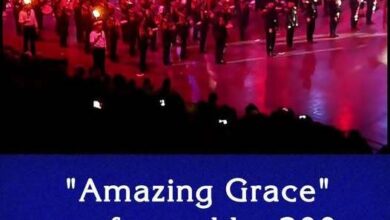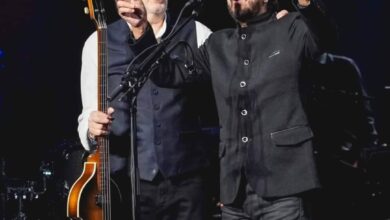In The 1950s, This Dance Was Famous, Can You Still Remember It
In February 1958, a new dance craze took hold across American high school gyms and sock hops, capturing the era’s youthful exuberance and embodying the spirit of rock ‘n’ roll. This dance was known as “The Stroll,” a line dance that quickly became synonymous with fun and spontaneity.
Originating from African American communities, “The Stroll” gained widespread popularity through the medium of television, particularly on Dick Clark’s “American Bandstand,” where teenagers nationwide watched and eagerly imitated the dance at their local gatherings.
“The Stroll” was not merely a dance; it represented a cultural shift reflective of the 1950s social dynamics. The dance involved two lines of participants facing each other, creating an aisle down the middle. Couples would take turns walking down the aisle in sync with the music, often infusing their own style and flair into their movements. This structure allowed for both group participation and individual expression, resonating deeply with the youth of the time as they began to explore their identities within the broader social context.
The accompanying song, also named “The Stroll,” was performed by the Canadian vocal group The Diamonds. Known for their smooth harmonies and catchy doo-wop tunes, The Diamonds played a crucial role in popularizing the dance. Their version of “The Stroll” was more than just a hit; it served as the soundtrack to a cultural phenomenon, capturing the joy and communal spirit of the era. Lead singer Dave Somerville’s rich baritone voice became the voice of the movement, guiding dancers with its melodic charm.
The widespread appeal of “The Stroll” made it a fixture at dance events across the country.
Its universal charm transcended racial and social boundaries in an era marked by segregation, making it accessible and irresistible to teenagers eager to embrace the latest trend. The simplicity of the dance, combined with its inherent coolness, made it a favorite pastime, with teens donning their best outfits and strutting down the aisle with a confidence that mirrored the optimism of post-war America.
As “The Stroll” gained momentum, it became a cultural staple, emblematic of a generation’s desire for fun and self-expression. Its influence extended beyond the dance floor, symbolizing a time of youthful rebellion and a break from traditional norms. The dance’s impact on American pop culture was profound, marking a significant moment in the evolution of dance and music, and leaving a lasting legacy on the social landscape of the 1950s.
?si=CbHsPwTM-VodZAIG





